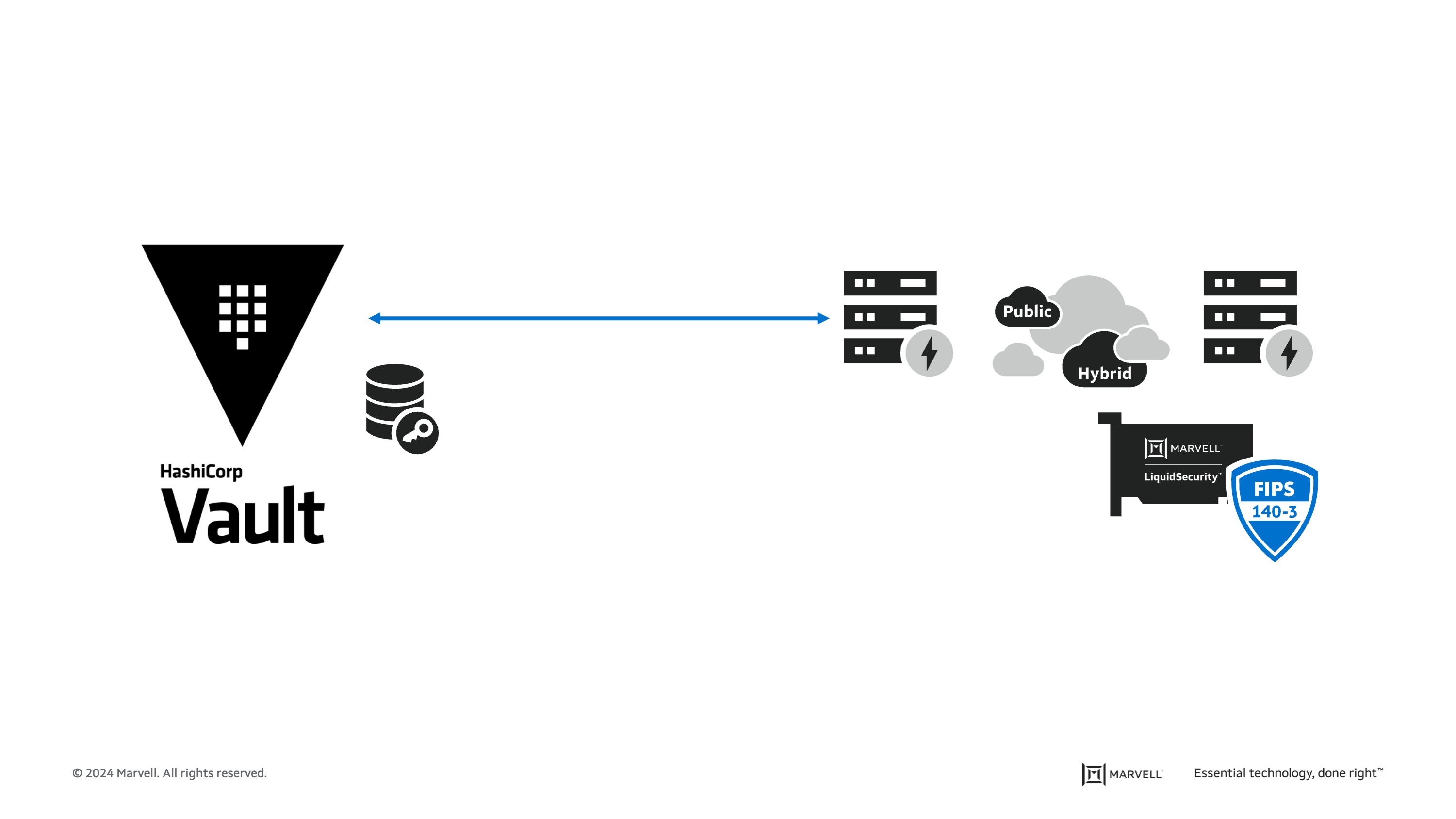Posts Tagged 'Security'
-
April 10, 2024
Cryptomathic and Marvell: Enhancing Crypto Agility for the Cloud
By Bill Hagerstrand, Director of Security Solutions at Marvell
Grab a cup of coffee. In this blog I describe how IT professionals can utilize Marvell® LiquidSecurity® Hardware Security Modules (HSMs) with Cryptomathic’s Crypto Service Gateway.
Cryptomathic has 35+ years of experience providing global secure solutions to a variety of industries, including banking, government, technology manufacturing, cloud, and mobile. The company’s Crypto Service Gateway software is a first-of-its-kind central cryptographic platform that provides centralized and crypto-agile management of third party HSM hardware, enhancing the behavior of HSMs while improving the time-to-market of business applications.
An HSM is a physically secure computing device that safeguards and manages digital keys, performs encryption/decryption functions, and provides strong authentication mechanisms. They typically come in two form factors: a PCIe card or a 1U network attached server. They are NIST (National Institute of Standards and Technology) FIPS 140-3, level-3 certified and most provide tamper evidence (visible signs of tampering), tamper resistance (the HSM becomes inoperable upon tampering) or tamper responsive (deletion of keys upon tamper detection). All provide logging and alerting features, strong authentication, and key management features, and support common APIs like PKCS#11. Applications that require cryptographic services will make API calls for keys used to encrypt data in motion or at rest.
-
April 10, 2024
HashiCorp and Marvell: Teaming Up for Multi-Cloud Security Management
By Bill Hagerstrand, Director of Security Solutions at Marvell

In this blog I describe how cybersecurity professionals can utilize Marvell® LiquidSecurity® HSMs with self-managed HashiCorp Vault Enterprise software, deployed on-prem and in the cloud.
HashiCorp provides infrastructure automation software for multi-cloud environments, enabling enterprises to unlock a common cloud operating model to provision, secure, connect, and run any application on any infrastructure. HashiCorp Vault provides the foundation for modern multi-cloud security. It was purpose-built in the cloud era to authenticate and access different clouds, systems, and endpoints, and centrally store, access, and deploy secrets, i.e. encryption keys, passwords, API tokens, tokens used in applications, services, privileged accounts, or other sensitive portions of the IT ecosystem. It also provides a simple workflow to encrypt data in flight and at rest. Global organizations use Vault to solve security challenges as they adopt cloud and DevOps-friendly solutions.
-
April 09, 2024
The Big, Hidden Problem with Encryption and How to Solve It
By Bill Hagerstrand, Director of Security Solutions at Marvell
Data encryption, invented nearly 50 years ago1, remains one of our most valuable tools for securing data.
It is also woefully under-utilized.
The most recent Entrust-Ponemon survey shows that 62% of enterprises have an encryption strategy in place, which is another way of saying 38% don’t2. (In 2021, it was 49%3.). 美国 Department of Health and Human Services imposes millions in fines per year on healthcare organizations for improper snooping of medical records by employees, or health records accidentally released when a doctor’s laptop gets stolen. And, although 60% got hit with ransomware attacks this year, only 24% were able to thwart an attack by encrypting it before the hackers could.
So, what’s the hang up?
Inertia. For all of its effectiveness, encryption has historically been difficult and/or inconvenient to use (in part, of course, for the need to keep access tight.) It requires cooperation between both the sender and receiver and adds additional processing power and time. How many of your personal emails or messages do you encrypt? One of the most widespread and successful uses of encryption in the consumer world—encrypting the data for financial transactions on phones—has succeeded in part because it takes the encryption process out of the hands of consumers and makes it a back-end function. Back-end encryption functions, meanwhile, are also typically performed on a hardware security module (HSM), a 1U to 2U appliance that companies historically kept on premise and maintained on their own.
-
January 14, 2021
By Wolfgang Sauter, Customer Solutions Architect - Packaging, Marvel
1
-
October 07, 2020
By Amir Bar-Niv, VP of Marketing, Automotive Business Unit, Marvell
The roots of Ethernet technology began in 1973, when Bob Metcalfe, a researcher at Xerox Research Center (who later founded 3COM), wrote a memo entitled “Alto Ethernet,” which described how to connect computers over short-distance copper cable. With the explosion of PC-based Local Area Networks (LAN) in businesses and corporations in the 1980s, the growth of client/server LAN architectures continued, and Ethernet started to become the connectivity technology of choice for these networks. However, the Ethernet advancement that made it the most successful networking technology ever was when standardization efforts began for it under the IEEE 802.3 group.
最近推文
- HashiCorp and Marvell: Teaming Up for Multi-Cloud Security Management
- Cryptomathic and Marvell: Enhancing Crypto Agility for the Cloud
- The Big, Hidden Problem with Encryption and How to Solve It
- Self-Destructing Encryption Keys and Static and Dynamic Entropy in One Chip
- Dual Use IP: Shortening Government Development Cycles from Two Years to Six Months

